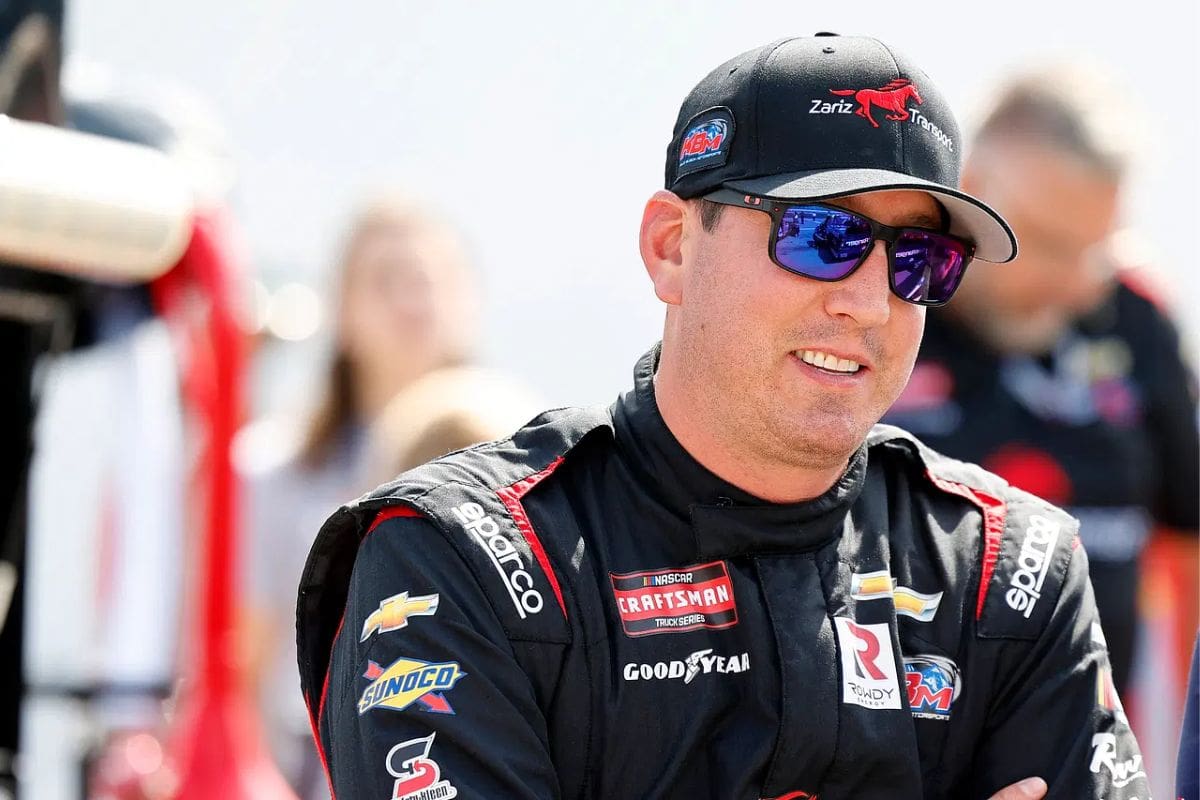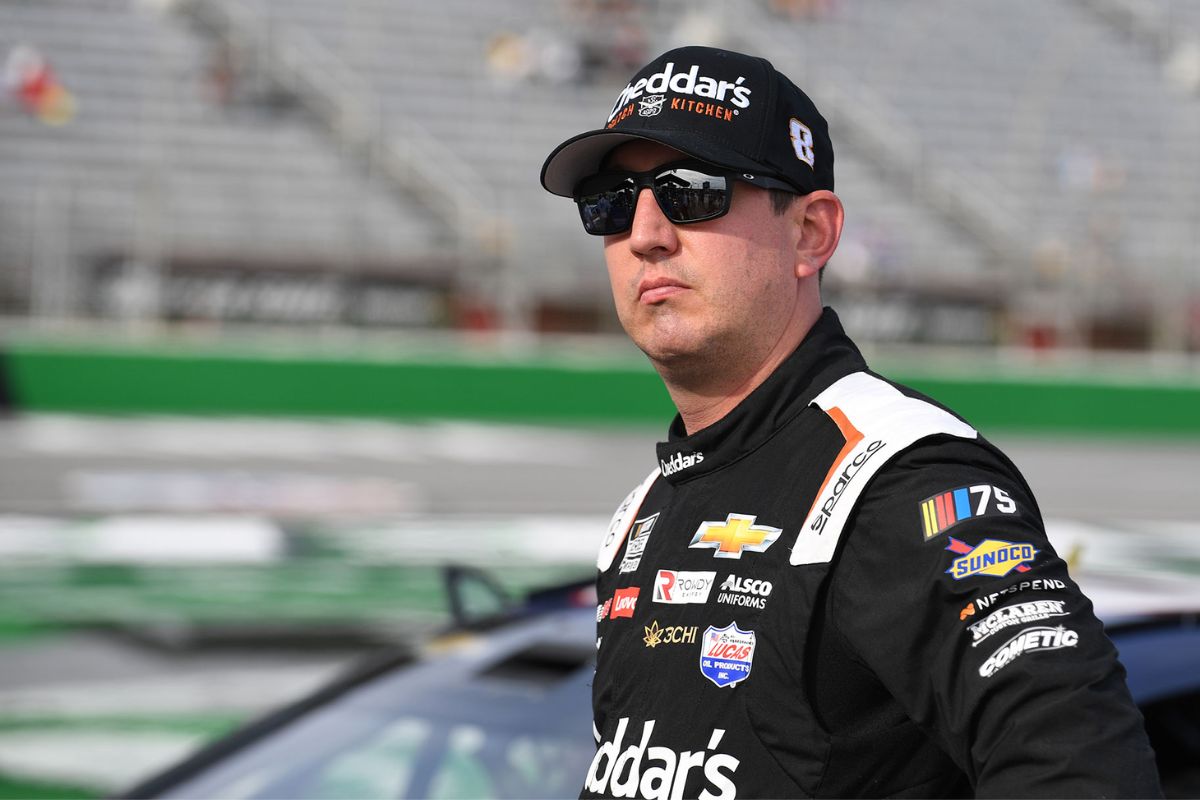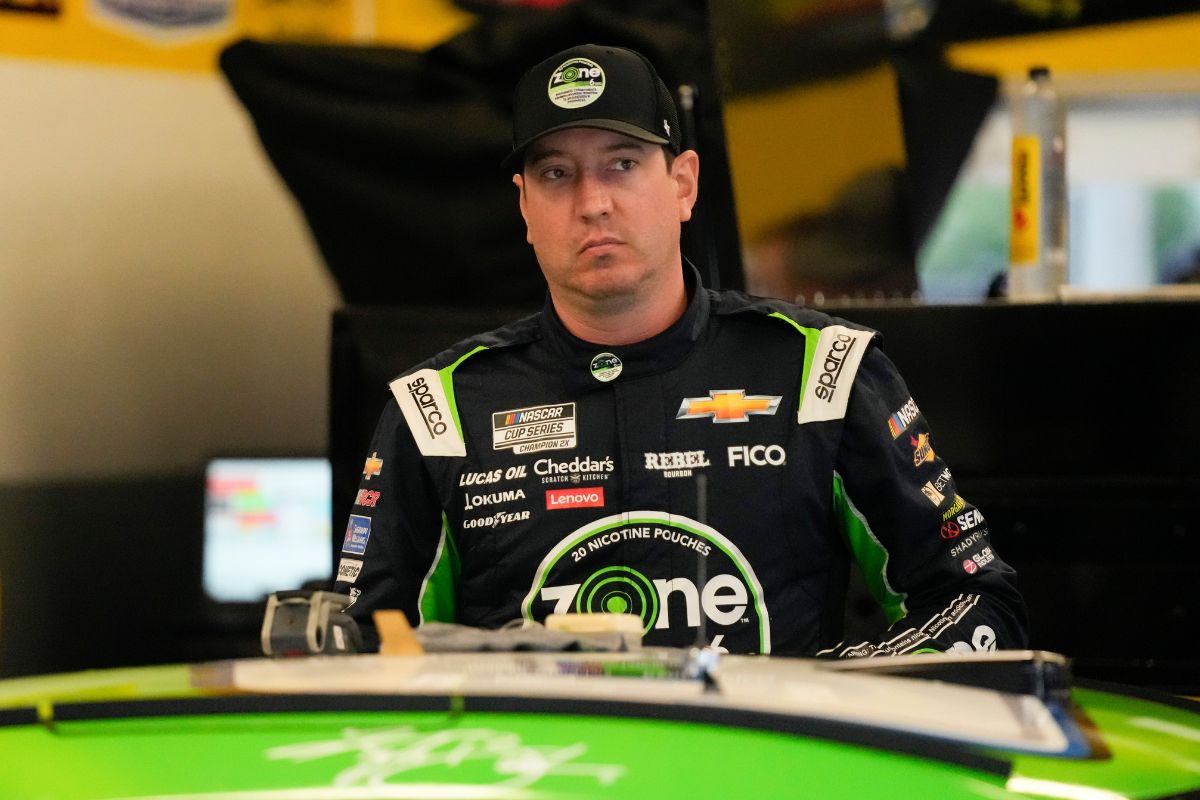Kyle Busch’s Texas Practice Crash: Kyle Busch’s recent practice crash in Texas has unequivocally underscored the unpredictable nature of motorsport, casting a shadow over his anticipated performance in upcoming races. The incident not only challenges Busch’s physical and mental preparation but also sets the stage for a strategic recalibration, as starting from the rear in a backup car is a challenging task even for a driver of his caliber. This pivotal moment could very well redefine his season, turning adversity into a demonstration of resilience and strategic acumen. As the motorsport community watches closely, the question remains: Can Busch overcome this setback and reaffirm his status as a top contender?
Key Takeaways
- Kyle Busch’s crash during Texas practice resulted from losing traction and colliding with a barrier.
- The crash necessitated a shift to a backup car, posing challenges in preparation for the race.
- Busch’s accident underscores the unpredictable and risky nature of motorsport, emphasizing the thin line between triumph and setback.
- Following the crash, Busch’s resilience and adaptability are under scrutiny, testing his mental fortitude and strategic acumen.
- The incident has significant implications for Busch’s 2024 season performance, highlighting struggles with form and underperforming machinery.
Kyle Busch’s Texas Crash
Amidst high expectations following a triumphant truck race victory, Kyle Busch’s weekend at the Texas NASCAR Cup Series took a dramatic turn due to a significant crash during practice, posing new challenges for the accomplished driver. The incident not only disrupted Busch’s momentum but also introduced a complex layer of adversity for the Richard Childress Racing team. Having shifted to the No. 8 Chevrolet, Busch’s aspirations for another Cup race victory at the Texas Motor Speedway, where he has previously secured four wins, faced an abrupt setback.
The implications of this crash are complicated. To begin with, Busch’s expertise and resilience as a driver are under inspection. Known for his ability to navigate through adversities, this incident tests his adaptability and mental fortitude, qualities imperative for any driver aiming for championship contention. Next, the crash underscores the inherent unpredictability and risks of motorsport, where even the most seasoned professionals can encounter unforeseen challenges.
From a strategic standpoint, starting from the rear end in the upcoming Cup race introduces a significant strategic dilemma for Busch and his team. The situation demands a recalibration of race-day strategies, focusing on damage control and an aggressive yet cautious approach to moving through the field. This incident serves as a stark reminder of the thin line between triumph and setback in NASCAR, demanding a blend of skill, strategy, and serendipity for success. As Busch prepares for the race, the motorsport community keenly observes how this adversity will shape his performance and strategy, marking a critical point in his pursuit of victory at the Texas Motor Speedway.

Details of the Incident
Diving into the specifics of the incident, Kyle Busch’s car experienced a loss of traction and initiated a prolonged spin, culminating in a collision with the outside barrier and subsequent ignition, which greatly impacted his preparation for the upcoming race. This episode marks a significant setback for the two-time NASCAR Cup Series champion, who has been grappling with form and the challenge of underperforming machinery throughout the 2024 season. The incident in Texas not only underscores the precarious nature of motorsport but also highlights the challenges faced by Busch and his team, RCR, in their quest for competitive resurgence.
The following table provides a concise overview of the critical aspects of this incident:
| Aspect | Detail | Impact on Busch |
|---|---|---|
| Cause of Incident | Loss of traction through the first set of corners | High |
| Immediate Consequence | Collision with the outside barrier and vehicle ignition | Severe |
| Season Performance | Only one top-5 finish after eight races, struggling with form and machinery | Significant |
This analytical exploration into the incident reveals not just the immediate repercussions—such as the shift to a backup car and the physical and psychological preparation challenges it entails—but also the broader implications for Busch’s season. The struggle to find form and the battle against underwhelming machinery are exacerbated by incidents like these, putting into perspective the arduous path that lies ahead for Kyle Busch and the RCR team in their pursuit of competitive redemption.

Kyle Busch’s Truck Series Victory
Despite facing significant challenges in the Cup Series, Kyle Busch demonstrated his resilience and racing prowess by securing a victory in the Truck Series at Texas, marking his second win of the season in this category. Competing in the No. 7 Chevy for Spire Motorsports, this win underscored Busch’s adaptability and strategic acumen across different NASCAR series. Busch’s post-race reflections, as reported by Motorsport.com, highlighted not only the performance of his vehicle but also the collective effort of his team and the astute guidance of crew chief Brian Pattie.
“Great team, everybody here at Spire. I appreciate Pattie and everybody that was able to work so hard to prepare us a really fast Silverado. They definitely kept my honest, I’ll give them that.” – (Busch)
Busch’s victory was not just a reflection of the car’s speed or his driving skills; it was a narrative of careful preparation and seamless execution by the Spire Motorsports team. The challenge posed by Corey Heim, the runner-up, added an extra layer of complexity to the race. Heim’s strategy and pace forced Busch to adapt in real-time, showcasing his ability to make split-second decisions under pressure. This dynamic added a strategic richness to the event, illustrating the high stakes and competitive tension that define NASCAR’s Truck Series.
Busch’s recognition of Heim’s threat and his tactical response—altering his line to maintain the lead—were a masterclass in defensive racing. It highlighted not only his experience but also his capacity to leverage the gap when it mattered the most. This victory, set against the backdrop of his broader challenges in the Cup Series, serves as a powerful reminder of Busch’s versatility and enduring competitive spirit in the face of adversity.

Kyle Busch’s Cup Series Standing
In the current NASCAR Cup Series season, Kyle Busch’s position at 15th with 189 points reveals a stark contrast to his expected performance and previous achievements. This standing, especially after eight races, is not just a numerical figure; it is a reflection of a series of challenges and perhaps unforeseen circumstances that have beleaguered Busch’s campaign. Analyzing his journey so far, one can deduce that the two-time Cup Series champion is encountering a phase that is testing his resilience, adaptability, and strategic acumen on the track.
Busch’s current standing is a departure from the dominant form he is known for, raising questions about the dynamics of his performance this season. Factors contributing to this scenario could range from on-track incidents, competitive advancements from rivals, or internal team strategies that have yet to yield the desired outcomes. It’s important to recognize that in the high-stakes environment of NASCAR, where margins for error are minuscule, a combination of skill, strategy, and sometimes fortune, dictates the trajectory of a season.
For enthusiasts and analysts observing Busch’s performance, this period serves as a critical juncture to assess not just his driving prowess but also the strategic responses from his team to overcome these challenges. The essence of motorsports lies in its unpredictability and the relentless pursuit of excellence. Therefore, Busch’s current standing, while temporarily reflective of struggle, also sets the stage for a potential narrative of resurgence and strategic mastery in the face of adversity.
News in Brief
The incident involving Kyle Busch at the Texas practice session underscores the unpredictability and inherent risks associated with motorsport.
It marks a crucial moment for Busch, testing his resilience and strategic acumen as he switches to a backup car and deals with starting from the rear.
This scenario not only challenges Busch’s physical and mental preparedness but also underscores the fine line between success and adversity in NASCAR, highlighting the critical nature of adaptability and strategic foresight in competitive racing.
Our Reader’s Queries
Q. What car does Kyle Busch drive in real life?
A. Kyle Thomas Busch, born on May 2, 1985, is an American professional stock car racing driver. He is a full-time competitor in the NASCAR Cup Series, piloting the No. 8 Chevrolet Camaro ZL1 for Richard Childress Racing. Additionally, Busch participates part-time in the NASCAR Craftsman Truck Series, steering the No. 7 Chevrolet Silverado for Spire Motorsports.
Q. How many total wins does Kyle Busch have?
A. Throughout his illustrious racing career, Kyle Busch has amassed an impressive total of 230 victories across NASCAR’s top three series. Specifically, Busch boasts 63 wins in the NASCAR Cup Series. Additionally, he holds the all-time wins record in both the Xfinity Series with 102 victories and the Truck Series with 65 wins.
ALSO READ:Kyle Busch Blames Kurt for NASCAR Outrage: The Shocking Truth Revealed!

